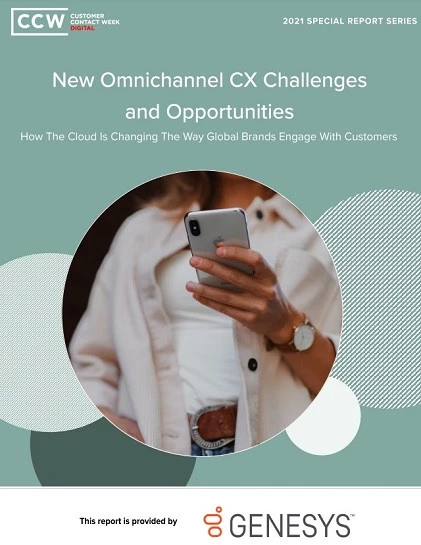10 Social Customer Care Mistakes
Add bookmarkWhen it comes to the customer experience, bad things are going to happen. Mistakes will be made. Orders will be inaccurate. Products will break. Complaints will be waged. Support will be required.
Because imperfection is reality, businesses can afford to be imperfect. They can afford to make mistakes.
What they cannot afford, however, is even a hint of question regarding their commitment to perfecting that imperfection. A customer knows and accepts that things will go wrong in part because he knows a customer-centric business will work to make those matters right. The second a business casts doubt on that commitment is the second the business casts doubt about its allegiance to the customer – and the second it risks driving the customer to a competitor.
By shifting customer conversations to a public forum, social media has added immense pressure to the support process. Existing and potential customers are now constantly dialed into the efforts of a business’ support team and thus constantly able to evaluate its commitment to creating perfection from imperfection.
Recent failures by JetBlue and Papa John’s confirm that such pressure is not fostering excellence. Numerous mistakes associated with the conception and execution of social customer care are to blame:
1) Prioritizing social marketing
Aware of its value in promoting a brand and managing customer sentiment, many businesses have ascribed a marketing label to social media.
Their recognition of the channel’s immense marketing potential is not wrong, but it paints an incomplete portrait. Social media is, in fact, a two-way communication environment, and that means customers will seek meaningful interactions and meaningful support.
Social, customer-centric businesses are businesses equipped to seize the marketing opportunities and meet the support expectations of social media. Businesses focused only on the former are the ones that run into problems.
They are the ones that avoid complicated support inquiries. They are the ones that inject humor into the wrong interactions. They are the ones that feel no pressure to adhere to certain service levels. They are the ones that do not hold social care to the same standard as telephone care.
They are the ones that, ultimately, make many of the other mistakes detailed in this article.
2) Treating social media as supplemental
There is no "extra credit" in the world of customer care. Vanity is no substitute for quality.
If a business is going to interact with customers in social, it needs to interact properly. Customers do not relax their expectations because a channel is less established. Businesses, therefore, cannot relax their service levels because the channel is less established.
Before entering the world of social customer care, a business needs to identify the key tenets of its support experience and assure it can produce those in the new channel. Just like a business could not excuse a poor telephone interaction because the associated agent or product were "new," a business cannot excuse a poor social interaction because it has less history in the forum. Customers want quality. Customers want efficiency. Customers want results.
3) Being selective about responses
Make no mistake – concerns about privacy and legality will necessitate some discretion when it comes to responding to social media inquiries. If an issue is categorically inappropriate for a public forum, the business must work to move that to a more suitable forum.
The brand’s personal preference cannot, however, drive any sort of discretion. Once a business makes clear its intent to interact with customers on a social network, it is committing to interacting with all customers on that social network. Since all customers expected to be valued as a priority, all customers expect their inquiries to be given meaningful attention.
A policy of answering only simple questions and acknowledging only positive feedback reveals that the business is using social media as a vanity tool rather than a customer support platform. One using social in the latter fashion knows that it must work diligently to answer all questions and resolve all issues.
4) Forcing a transfer
If a customer is attempting to handle an issue via social media, the business should assume the customer has a reason for attempting to handle the issue via social media. If it respects its customer, it will therefore do everything in its power to resolve the issue within that channel.
Far too many of today’s businesses ignore that concept. Far too many throw out the call center phone number the second the issue gets the least bit complicated.
In some cases, there will be logical, legal and operational reasons for passing a customer from social to the telephone. A business’ failure to respect the importance of customer preference – and consequential failure to develop alternative channels of the appropriate robustness – is not one of those reasons.
5) Withholding limitations
Not all businesses are capable of providing full-service social customer care on a 24/7/365 basis. Such a notion might not be ideal, but it is real.
Social, however, is a fundamentally 24/7/365 concept. It operates in accordance with the notion of perpetual connectivity, and it creates a continuous link between brand and business. Unlike a brick-and-mortar store that can close up shop or a phone line that can reveal the offices are closed, social creates no overt, tangible restrictions on communication. If the customer has a Twitter and the business has a Twitter, the customer can initiate a conversation.
And insofar as the customer is conditioned to believe he is the top priority for the business, he is going to expect a response.
If a response is impossible, the burden falls on the business to proactively communicate that. If a Twitter or Facebook account is only staffed during business hours, it is the business’ responsibility to explain that it is not adhering to social media norms. If a Twitter or Facebook account is only being used for outbound communication rather than conversations, it is the business’ responsibility to explain that it is not adhering to social media norms.
In today’s "age of the customer," businesses should not be striving for mediocrity or incompleteness. But if they are going to operate in accordance with either, customer-centricity dictates that they alert customers to any limitations.
6) Hiding behind the private message
If a customer’s decision to engage in a social platform is a reason for the brand to respond in that social platform, then a customer’s decision to make a public comment on social media is a reason for the brand to respond publicly.
Barring, again, issues involving confidential material, businesses should attempt to close off a matter left open by the customer. In addition to ignoring his parameters for the conversation, switching to a private customer limits the lasting value of the resolution.
A resolution or answer offered in a public forum remains in that public forum and can thus be used to aid other customers. While a business should not force a customer to self-serve using information from previous interactions, it should absolutely offer that option.
While a business might not be overly sympathetic to the concern, a customer forced to switch to a private forum also loses his leverage. Awareness that its effort is on display motivates the business to perform. The customer loses when that motivation is removed.
7) Botching the tone
A very delicate balance is required to successfully communicate on social media.
On the one hand, a business needs to be personal and human. Social is synonymous with a more informal, more organic flavor of communication, and a business that wants to best connect with its customers must be mindful of that reality. Speaking only official public relations speak is the surest way to create an unwanted distance between brand and customer.
On the other hand, businesses are still dealing with high-stakes, emotional matters. They might want to make jokes, but they need to assure those jokes are tasteful in context. Those jokes, after all, serve to represent a business’ official position on a matter.
8) Ignoring the environment
Some of the best social customer experience moments are achieved when a business can align its communication with a current event or trending topic. Some of the worst experience moments exist when a business operates without cognizance of the outside world.
When using social media, a customer is operating within a dashboard that incorporates elements of his personal life and information about his personal preferences, passions and hobbies. A business enters that world when it initiates communication, and it needs to be mindful of that.
Far too many businesses Tweet from a position of detachment. They will share generic business articles during the Grammys. They will make no mention of the Super Bowl when a Patriots fan complains about his cable during the big game. They turn one of the most important platforms for connecting with customers into a source of disconnect.
9) Setting the wrong objectives
Action stems from conception. If the action is wrong or insufficient, the culprit is very likely a flawed conception.
A contact channel like any other contact channel, social media (as a customer care option)should be viewed through the same performance lens as more established platforms like telephony, email and live chat. Superficial channel differences might produce superficial tweaks in the conversational style, but they do not change the fundamental purpose of the interaction: connecting with the customer and/or resolving an issue.
When businesses instead use social media in a different manner—to deflect calls from the contact center, to pre-qualify calls, to reduce costs, to cheaply brand the business—they affect the support process.
They creates gaps and cracks that are not meant to exist in today’s seamless, omni-channel marketplace.
10) Establishing the wrong metrics
Just as the wrong objectives risk compromising the social customer care experience, so too do the wrong metrics.
If businesses downplay the importance of proxies like average handle time, first call resolution and CSAT score because social is a fringe environment, they risk sacrificing the productivity of agents. They risk undermining the customer experience.
To assure a customer receives an experience appropriate for his issue regardless of his channel preference, a business cannot ignore essential metrics in certain channels. An agent should know that he has to perform at full capacity regardless of channel.












